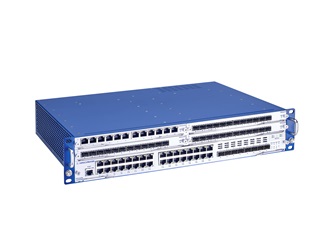The modern mass transit organization has vast communication needs. The ever-increasing degree of train automation, complexity of security measures, and level of passenger demands will tax your system. Multiple applications require guaranteed throughput and have precise requirements, so the interconnecting backbone network must be robust, flexible and reliable.
The Connected Backbone and OCC Network integrates advanced communication systems and data analytics to provide real-time insights into the status of transit operations. This not only aids in immediate decision-making but also in planning and forecasting for future needs. Key outcomes include improved security and surveillance capabilities, thanks to digital networks that offer enhanced monitoring and immediate response to incidents. Ultimately, these technologies contribute to making public transportation safer, more reliable, and efficient.
Elements to consider for connected backbone and OCC networks
Areas of operations (AO) interconnections

The backbone network bridges mission-critical functions of onboard systems, trackside/wayside devices, and in-station assets through multiple redundant networks or blended, shared-service environments.
Operation
control center

OCC and backup centers allow centralized management and orchestration of the entire network with real-time information updates.
Train control
systems

Simple, secure connection to the network from remote offices and the field.
Key benefits of connected backbone and OCC networks
|
Reliability Network ability offer services consistently, even during failures |
Bandwidth Maximum amount of data able to be transmitted at a given time |
Latency Delay before a transfer of data begins following an instruction for its transfer |
Durability Ability to preserve data in the event of a failure |
|
Automated fault resolution Detecting and correcting potential or active faults without user interaction |
Price Costs associated with all pieces of network design, components, implementation, and servicing |
Customer service Ability to provide rapid assistance to end-users |
Our approach to connected backbone and OCC network solutions
Early planning to optimize the backbone network’s design enhances a solution’s overall performance, flexibility, scalability and cost-effectiveness. Attention paid to the network design early in the project saves time over fundamental design changes made later in the process.
Belden has the expertise to manage such complexity based on a deep knowledge of well-documented uses built specifically for rail applications. Our approach begins with a thorough analysis of the requirements, followed by designing, securing, deploying, and validating a solution that best adapts to the specific case.












